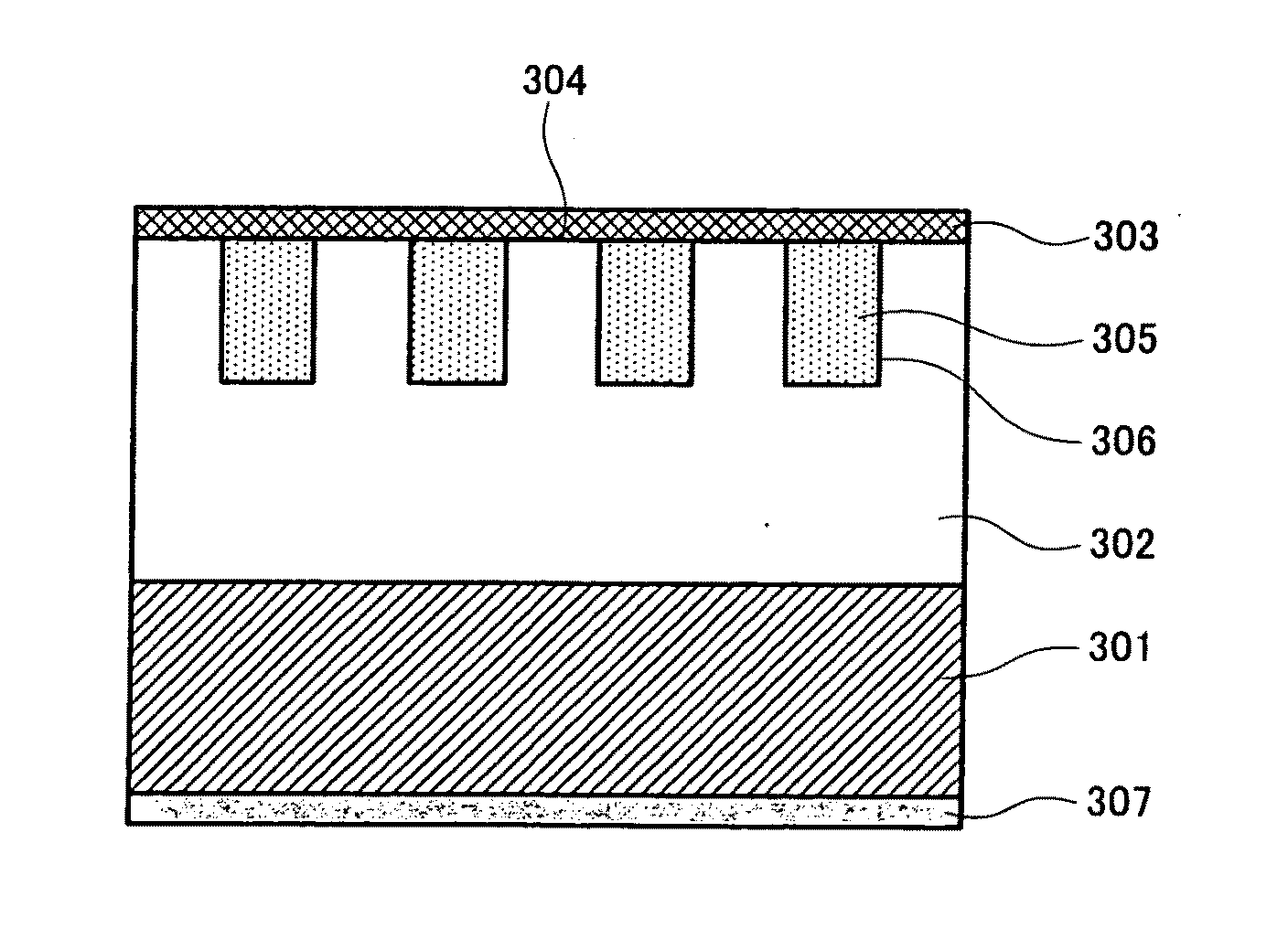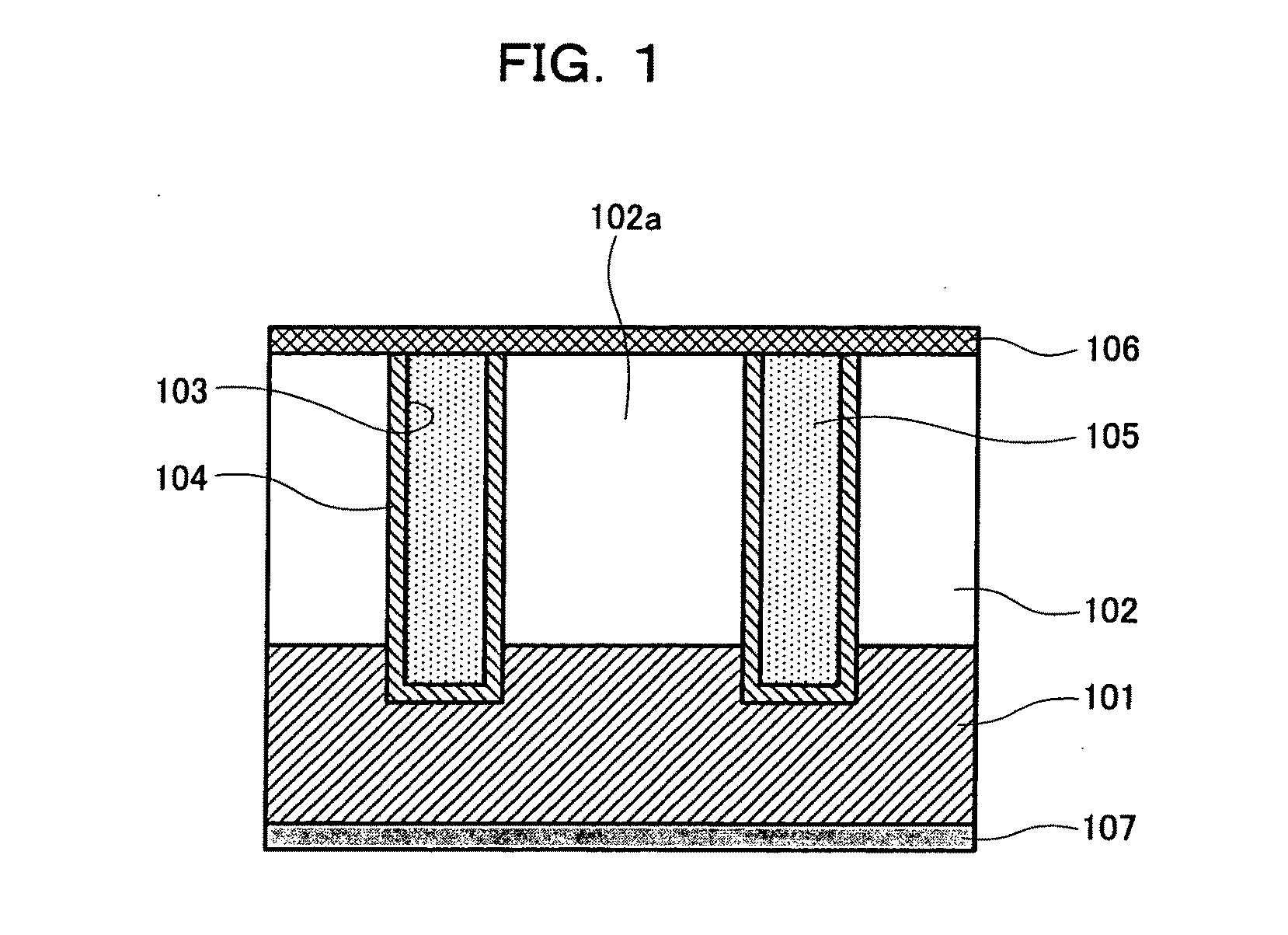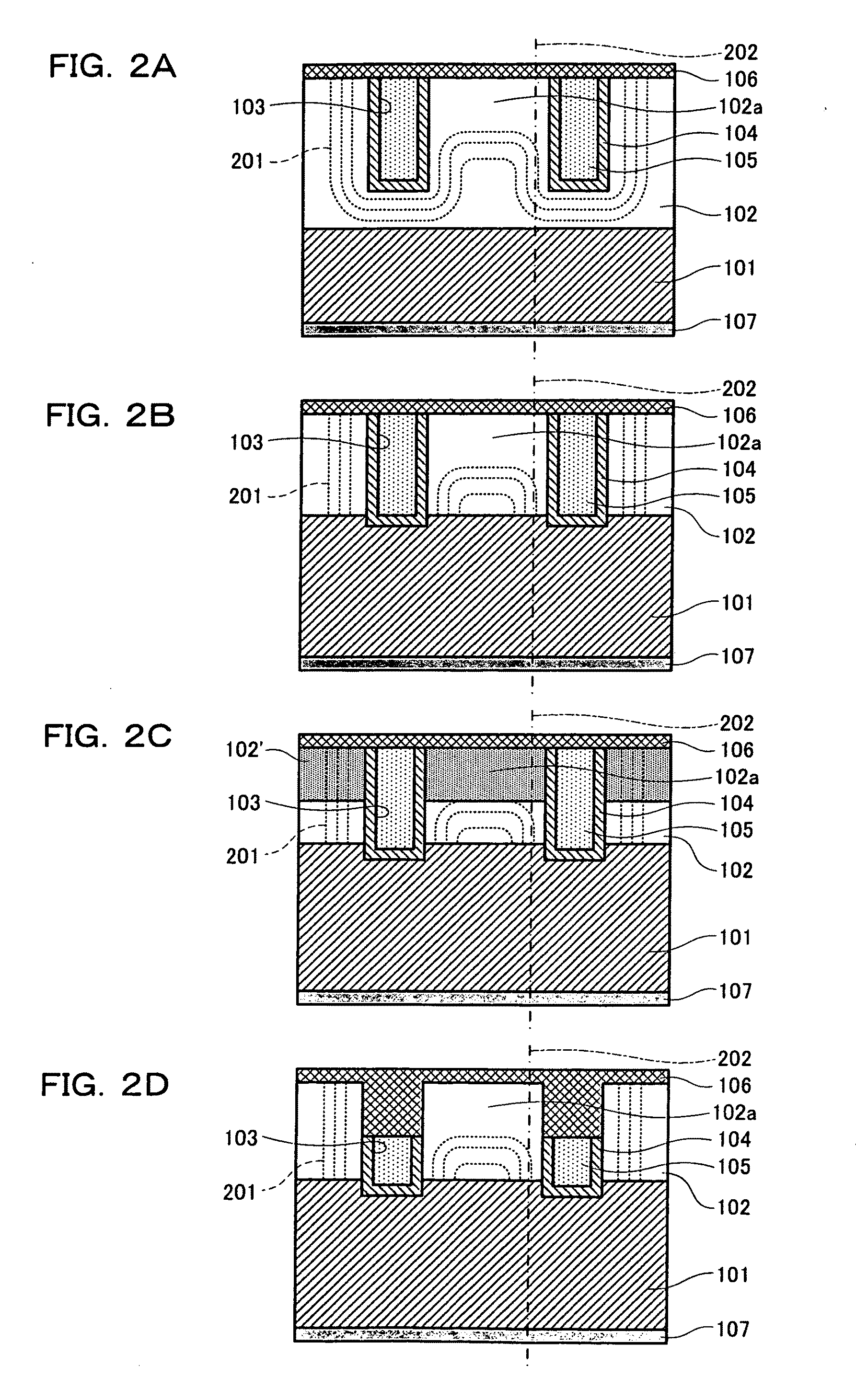Schottky barrier semiconductor device
a technology of semiconductor devices and shields, applied in semiconductor devices, basic electric elements, electrical equipment, etc., can solve the problems of reducing the power efficiency in high frequency regions, difficult to simultaneously minimize both these properties, and jbs commonly undergoes a great forward voltage drop, so as to increase the schottky junction area, increase the amount of forward current, and increase the chip size of the semiconductor element.
- Summary
- Abstract
- Description
- Claims
- Application Information
AI Technical Summary
Benefits of technology
Problems solved by technology
Method used
Image
Examples
embodiment 1
[0102]FIG. 1 shows a sectional view of a Schottky barrier semiconductor device in accordance with the present invention. In FIG. 1, the Schottky barrier semiconductor device has a semiconductor layer 102 with a low impurity concentration formed on one of the major surfaces, that is, the front and back surfaces, of a semiconductor substrate 101 of N or P conductivity type. A plurality of trenches 103 are formed in the low-concentration semiconductor layer 102. Each of the trenches 103 is shaped so as to extend from the front surface of the low-concentration semiconductor layer 102 to the semiconductor substrate 101.
[0103]A part of the semiconductor layer 102 between the trenches 103 forms a mesa portion 102a. An insulating film 104 is formed at the boundary between the mesa portion 102a and the trench 103. A first electrode 105 is formed inside the trench 103 surrounded by the insulating film 104.
[0104]A second electrode 106 is formed on the front surface of the low-concentration sem...
embodiment 2
[0112]FIG. 6 is a sectional view showing another embodiment of the present invention. A lower semiconductor layer 102 having a lower impurity concentration than the semiconductor substrate 101 is formed on one of the major surfaces, that is, the front and back surfaces, of the semiconductor substrate 101. An upper semiconductor layer 102′ having a much lower impurity concentration is formed on the front surface of the lower semiconductor layer 102. At least one trench 103 is formed which extends from the front surface of the upper semiconductor layer 102′ to the semiconductor substrate 101. The mesa portion 102a is formed between the trenches 103 in both the lower and upper semiconductor layers 102 and 102′.
[0113]The insulating film 104 is formed at the boundary between the mesa portion 102a and each of the trenches 103. The first electrode 105 is formed inside the trench 103 surrounded by the insulating film 104. The second electrode 106 formed on the front surface of the low-conce...
embodiment 3
[0119]FIG. 7 shows a sectional view of another embodiment of the present invention. In FIG. 7, the Schottky barrier semiconductor device has the semiconductor layer 102 with the low impurity concentration formed on one of the major surfaces, that is, the front and back surfaces, of the semiconductor substrate 101. The plurality of trenches 103 are formed in the low-concentration semiconductor layer 102. Each of the trenches 103 is shaped so as to extend from the front surface of the low-concentration semiconductor layer 102 to the semiconductor substrate 101.
[0120]The part of the semiconductor layer 102 between the trenches 103 forms the mesa portion 102a. The insulating film 104 is formed at the boundary between the mesa portion 102a and the trench 103. The first electrode 105 is formed inside the trench 103 surrounded by the insulating film 104.
[0121]The second electrode 106 formed on the front surface of the low-concentration semiconductor layer 102 so as to cover the first elect...
PUM
 Login to View More
Login to View More Abstract
Description
Claims
Application Information
 Login to View More
Login to View More - R&D
- Intellectual Property
- Life Sciences
- Materials
- Tech Scout
- Unparalleled Data Quality
- Higher Quality Content
- 60% Fewer Hallucinations
Browse by: Latest US Patents, China's latest patents, Technical Efficacy Thesaurus, Application Domain, Technology Topic, Popular Technical Reports.
© 2025 PatSnap. All rights reserved.Legal|Privacy policy|Modern Slavery Act Transparency Statement|Sitemap|About US| Contact US: help@patsnap.com



